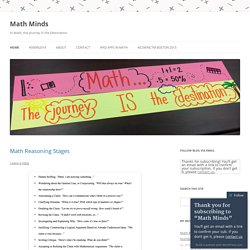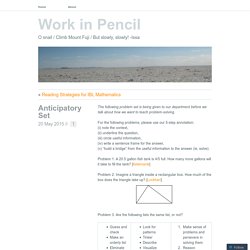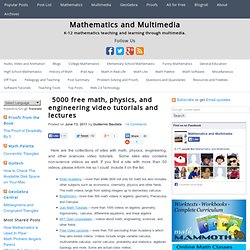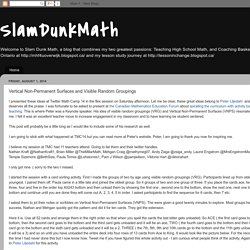

In Math, the Journey IS the Destination. The math ego in me wants to preface this post by saying, I understand how to find patterns, I understand how to graph lines, I understand slope and y-intercept and could graph any line based on that information….etc; however, more and more I find the need to truly reexamine the way in which I “understand” concepts in math.

This unit is one of those times. Math ego aside, I have left class so confused over the past couple of days, calling my math phone-a-friends for tutoring! I blogged about the beginning of the unit here and since then my head has been spinning. We opened the unit reading growth stories of children that gave the child’s age at age 2 and how they grew. The students created data to match the story and graphed it on this graph (which at the time I didn’t think too much about the way the x and y-axis were set up) We had great conversations about how they determined their data, the steepness of lines based on the change, and what steady growth looks like.
Anticipatory Set. The following problem set is being given to our department before we talk about how we want to teach problem-solving.

For the following problems, please use our 5-step annotation: (i) note the context, (ii) underline the question, (iii) circle useful information, (iv) write a sentence frame for the answer, (v) “build a bridge” from the useful information to the answer (ie, solve). Problem 1: A 20.5 gallon fish tank is 4/5 full. How many more gallons will it take to fill the tank? [Kelemanik] Problem 2: Imagine a triangle inside a rectangular box. Problem 3: Are the following lists the same list, or not? Problem 4: Describe in detail what went on in your mind to “build the bridge” in problems 1 and 2. Problem 5: Describe the relationship between the bridge-building you did in previous problems, and the list(s) from Problem 3.
Problem 6: To what extent do you relate to the following? Problem 7. Problem 8. Problem 9. A teacher-led mini-conference at NCTM. Teacher Education by Design - TEDD. Estimation 180 - Home. Asking students to choose their own path and justify it. SolveMe Mobiles. I teach math with all of you. Virtual Filing Cabinet. Math is Fun. Kuta Software. World of Math Online. WebMath. IXL Math. 5000 free math, physics, and engineering video tutorials and lectures. Here are the collections of sites with math, physics, engineering, and other sciences video tutorials.

Some sites also contains non-science videos as well. If you find a site with more than 50 videos, please inform me so I could include it on the list. Khan Academy – more than 2100 2600 not only for math but also includes other subjects such as economics, chemistry, physics and other fields. The math videos range from adding integers up to elementary calculus. Brightstorm - more than 500 math videos in algebra, geometry, Precaculus and Calculus.Just Math Tutorials – more than 1000 videos on algebra, geometry, trigonometry, calculus, differential equations, and linear algebraMIT Open Courseware – videos about math, engineering, sciences, and other fields.Free Video Lectures – more than 700 (excluding Khan Academy’s which they also listed) videos.
21 Common Core-Aligned Math Apps for High School. By edshelf: Reviews & recommendations of tools for education If your high school has adopted Common Core Standards and provides students with iPads (either 1:1 or via an iPad cart), you will need to find apps that map to these standards.

And if you teach math, you are in luck. Math and engineering teacher Chris Beyerle from South Carolina curates this collection of math apps. These map to the eight Standards for Mathematical Practice. That’s CCSS.Math.Practice.MP1 to CCSS.Math.Practice.MP8. Desmos. 21 GIFs That Explain Mathematical Concepts. “Let's face it; by and large math is not easy, but that's what makes it so rewarding when you conquer a problem, and reach new heights of understanding.”

Danica McKellar As we usher in the start of a new school year, it’s time to hit the ground running in your classes! Math can be pretty tough, but since it is the language in which scientists interpret the Universe, there’s really no getting around learning it. Check out these gifs that will help you visualize some tricky aspects of math, so you can dominate your exams this year. Vertical Non-Permanent Surfaces and Visible Random Groupings. I presented these ideas at Twitter Math Camp 14 in the flex session on Saturday afternoon.

Let me be clear, these great ideas belong to Peter Liljedahl and he deserves all the praise. I was fortunate to be asked to present at the Canadian Mathematics Education Forum about spiralling the curriculum with activity based teaching. This is where Peter was a Keynote speaker. His idea of visible random groupings (VRG) and Vertical Non-Permanent Surfaces (VNPS) resonated with me. I felt it was an excellent teacher move to increase engagement in my classroom and to have learning be student centered. This post will probably be a little long as I would like to include some of his research as well. Visual Patterns - 1-20. Jo Boaler. OAME Leadership 2014 « Amy Lin. YouCubed - Join the Revolution.